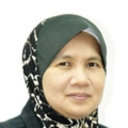Roles of diet, lifetime physical activity and oxidative DNA damage in the occurrence of prostate cancer among men in Klang Valley, Malaysia.
Atslēgvārdi
Abstrakts
BACKGROUND
There is a paucity of information on risk factors of prostate cancer, especially those related to dietary and lifestyle among Asian populations.
OBJECTIVE
This study aimed to determine the relationship between dietary intake (macronutrients, fruits, vegetables and lycopene), lifetime physical activity and oxidative DNA damage with prostate cancer.
METHODS
A case control study was carried out among 105 subjects (case n=35, control n=70), matched for age and ethnicity. Data on sociodemographic, medical, dietary intake, consumption of lycopene rich food and lifetime physical activity were obtained through an interview based questionnaire. Anthropometric measurements including weight, height and waist hip circumferences were also carried out on subjects. A total of 3 mL fasting venous blood was drawn to assess lymphocyte oxidative DNA damage using the alkaline comet assay.
RESULTS
Cases had a significantly higher intake of fat (27.7 ± 5.5%) as compared to controls (25.1 ± 5.9%) (p < 0.05). Mean intakes of fruits and vegetables (3.11 ± 1.01 servings/d)(p < 0.05), fruits (1.23 ± 0.59 servings/d) (p<0.05) and vegetables (1.97 ± 0.94 servings/d) were higher in controls than cases (2.53 ± 1.01, 0.91 ∓ 0.69, 1.62 ± 0.82 servings/d). A total of 71% of cases did not met the recommendation of a minimum of three servings of fruits and vegetables daily, as compared to 34% of controls (p < 0.05) (adjusted OR 6.52 (95% CI 2.3-17.8)) (p < 0.05). Estimated lycopene intake among cases (2,339 ∓ 1,312 mcg/d) were lower than controls (3881 ∓ 3120 mcg/d) (p< 0.01). Estimated lycopene intake of less than 2,498 mcg/day (50th percentile) increased risk of prostate cancer by double [Adjusted OR 2.5 (95%CI 0.99-6.31)]. Intake of tomatoes, watermelon, guava, pomelo, papaya, mango, oranges, dragon fruit, carrot, tomato sauce and barbeque sauce were higher in controls compared to cases. Intake of tomato sauce of more than 2.24 g/d (25th percentile), papaya more than 22.7 g/d (50th percentile) and oranges more than 19.1g/h (50th percentile) reduced prostate cancer risk by 7.4 (Adjusted OR 7.4 (95% CI 1.17-46.8)), 2.7 (adjusted OR 2.75 (95% CI 1.03-7.39)) and 2.6 times (adjusted OR = 2.6 (95% CI=1.01-6.67)), respectively (p < 0.05 for all parameters). No oxidative damage was observed among subjects. Past history of not engaging with any physical activities at the age of 45 to 54 years old increased risk of prostate cancer by approximately three folds (Adjusted OR 2.9(95% CI = 0.8-10.8)) (p < 0.05). In conclusion, low fat diet, high intake of fruits, vegetables and lycopene rich foods and being physical active at middle age were found to be protective. Thus, it is essential for Malaysian men to consume adequate fruits and vegetables, reduce fat intake and engage in physical activity in order to reduce prostate cancer risk.


